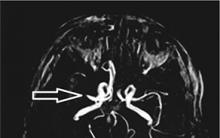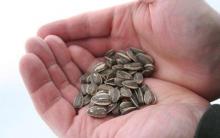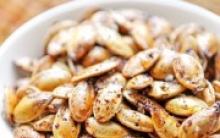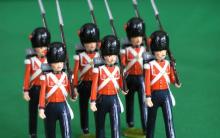In order for you to become a little clearer about why the three-leaf clover became the symbol of Northern Ireland, you need to get to know something else no less, and even more important character- Saint Patrick.
Afro-Irish of British blood
Behind many symbols there are odious figures. Northern Ireland is no exception.
Patrick was born and raised in Roman Britain in the town of Bannavem. By historical information we're talking about about one of the provinces during the reign of the Roman Empire in the British Isles.
The young man grew up normal person, without special divine prerequisites and aspirations to know the spirituality of everything and everyone. Perhaps this would have been the case if not for his capture and subsequent slavery in Northern Ireland. The young man could not endure the hardships of deprivation for long and fled. It must be said that he was not very successful, since he was captured and again the bonds of bondage could not hold him.
Believing that divine guidance had helped him, Patrick decided to be ordained. And he began to preach in Ireland about the Father, the Son and the Holy Spirit. And here on the stage is that same trefoil. Three leaves - three hypostases of God. Saint Patrick found something in common in this and used the example of the three-leaf clover to explain the role of the Divine Trinity.
Today you can see images with this plant in his hand. It is customary to portray him in this way. Even on a holiday, when the saint is honored, it is customary to dress in green clothes, organize cheerful musical events, generously treat friends and wear crosses made of paper or fabric on clothes. Interestingly, all drinking establishments throughout Ireland used to close on this day. But the holiday cannot be banned, and the authorities eventually allowed the tradition to all true Irish.
And why he is an African becomes clear when you find out that in Nigeria he is revered no less than in Ireland.
Truth and fiction
Not everything that is generally accepted is true. The shamrock has its defenders and opponents.
Not all historians share the version about the role of the shamrock in Patrick's sermons in Northern Ireland. There is no indication of such facts in the saint’s writings. Therefore, it is generally accepted that clover is to some extent a fiction that does not correspond to reality.
However, the shamrock has become popular and is one of the main symbols of Northern Ireland along with St. Patrick himself, the distinctive Celtic harp, the white flag with red stripes and many others. Just as it is impossible to imagine without the tricolor flag, so it is impossible to imagine the modern Irish without the three green leaves of this simple plant, which played such a significant role in the spread of faith in God.
Great Britain's western neighbor has fought for its independence for too long, which is why it can be proud that the symbol on its main emblem has ancient roots. The modern coat of arms of Ireland was approved in November 1945, but the golden harp, which occupies a central place, has been used by the Irish in official documents and heraldry for centuries.
Symbol of Free Ireland
Many art connoisseurs rate the coat of arms of Ireland as a masterpiece artistic thought, the depth of the concept and simplicity of implementation are so amazing. Three colors were chosen for the main symbol of the country:
- gold for the image of a harp;
- silver with which the strings are painted;
- azure is a rich blue color for the field.
Each of these colors is loved by monarchs of all countries and continents, on the coats of arms of many modern states world you can see one tone or another, or a combination of them.
Musical symbol of the country
Choosing a seemingly ordinary harp musical instrument, explained deep traditions and one of the most ancient Irish legends. In addition, by selecting it as the main state emblem, Ireland thus stood out among all the countries on the planet. Not a single musical instrument - not on a single coat of arms.
The first harp was a gift from the gods to Dagda, the earthly ruler of Ireland, after which it was stolen by evil deities, but was found and returned to its owner by representatives of light and the sun. It has been known as a symbol of Ireland since the 13th century. The mission of the harp is not only beautiful music that inspires deeds for the sake of the country, its meaning for every Irishman is much greater.
Firstly, she was the main one in the Irish orchestra. It is not for nothing that archaeologists still find tools or their fragments during excavations; the oldest of them are 500–600 years old.
Secondly, the famous monarchs John and Edward I decorated Irish coins with the image of a harp. Already in 1541, after the formation of the Kingdom of Ireland under the leadership of Henry I of Ireland, it became a symbol of the country and also appeared on the local currency.
After the unification of three states - England, Scotland and Ireland - the harp took its rightful place on one of the fields of the shield of the United Kingdom, and from there it went to wander among other coats of arms, derived from the main symbol of the country.
Modern independent Ireland remains faithful to traditions and the coat of arms, the image of which can be seen on official documents, seals, coins and banknotes. It is also used by the president and government of the country.
Irish Shamrock, a three-leaf clover identified in 1893 by Irish naturalist Nathaniel Colgan as a species of Trifolium repens (creeping clover or white clover or Dutch clover).

It was generally believed that the shamrock was a clover, from the Gaelic word "seamrog" (small clover, from seamair clover) and English word"shamrock" is the phonetically closest rendering of the Irish equivalent. However, the botanical world is not so sure that this is the case and during the debate, options were considered where some candidates for the shamrock symbol were not even classified as clovers. Of course, some of the confusion arose from different artistic Celtic depictions over the centuries.
According to botanist Charles Nelson's Survey of the Irish (1988):
- 46 percent believe that the shamrock is trifolium dubium(doubtful clover - lesser shamrock)
- 35 percent- trifolium repens(be red clover)
- seven percent - medicap lupulina(black alfalfa)
- five percent - oxalis acetosella(Oxalis common, hare cabbage or cuckoo clover)
- four percent - trifolium pratense(Red clover)
It goes without saying that the talk that the Irish shamrock can only grow on Irish soil is a myth. Three-leaf clover grows all over the world, from Tasmania to South Africa, from North America to England. It just has a different name in different places.
But, oddly enough, Charles Nelson claims that the shamrock only "exists" on St. Patrick's Day, and the next day it is already known as a young clover.
The symbol of Ireland, recognized throughout the world, in most cases is aimed specifically at tourists, since the shamrock is the emblem of the Irish Tourist Board, Failte Ireland (Failte - Welcome). However, without a doubt, the shamrock symbol in Ireland can be seen on almost everything, from the tail of Aer Lingus planes to lampposts in Dublin.
Many tourists to Ireland believe that the leaf of the humble plant is the official symbol of Ireland and has a more exalted status than the Gaelic harp (the coat of arms of Ireland).
But in any case, the shamrock has some legal protection. According to the Trademarks Act 1996, use of the shamrock symbol is limited to goods and services of Irish origin. Only the Ministry of Industry, Trade and Labor can consider requests to use the symbol.
A live clover leaf is traditionally worn on the lapel of clothing on St. Patrick's Day. In times past, the Irish were filled with pride when they pinned the plant to their clothing. And before going to bed, it was customary to dip a leaf in a drink and throw it through left shoulder before drinking "Patrick's cauldron" modern days This tradition is gradually dying out, but the invention of clover leaf tea bags supports the export of shamrock around the world.
The first to pave the way for the shamrock to glory were the Celtic Druids, who believed that the number three had mystical powers. There is no reliable information about why they were sure of this, perhaps the number three represented the past, present and future or the underworld, earth and heaven.
Regardless of the meaning that the Celts attached to the number, everything is quite clearly expressed in artistic symbolism. Three-faced faces, trixels, trixelions, often appear in ancient images. The organization of Celtic society was based on a magical number - three social classes, three colors, three main deities. And it is not surprising that in such a “three-valued” atmosphere they began to revere the plant with its three leaves, the creation of nature itself.
Saint Patrick, intending to convert the Celts to Christianity, was well aware of their reverence for the number three and, according to legend, used a clover leaf to illustrate the Christian doctrine of the Trinity, and explained its essence - about God the Father, God the Son and God the Holy Spirit.
The true story of the fifth century saint who initiated the Celts into Christian teaching using a trefoil, has no historical evidence and is not confirmed by handwritten documents. Historians indicate that the first written references to "shamrocks" appeared around the beginning of the 18th century, 1,200 years after the death of Saint Patrick. The story was recorded in 1726 in a book on the wild plants of Ireland written by a Protestant cleric (Caleb Threlkeld Synopsis Stirpium Hibernicarum. The first Essay of the kind in the Kingdom of Ireland, Dublin, 1727). He noticed that the Irish wear bouquets of white clover leaves on their hats on March 17, St. Patrick's Day, and spoke about the established tradition of the shamrock as a symbol of the Holy Trinity.
But by then the Irish had indeed adopted the shamrock as a symbol, appearing on medieval tombstones and ancient coins, and a written account from 1681 describes the shamrock as an emblem on the lapels of clothing on St. Patrick's Day.
Ella Mikhailenko
Celtic style© 2010-2012. Copying materials is prohibited.
Direct indexed link to the site when quoting required.
With the help of symbols, people expressed their attitude to reality. Although today Celtic magic has lost its original meaning, it has passed through the centuries and acquired a new meaning.
Druids and the clover of the emerald isle
The “Emerald Isle”, with the velvety grass of the Irish hills and the magic of the Druids in the air, is located in the very north of Europe. Every stone, tree and blade of grass here has a story to tell. The creeping white clover - a symbol of Ireland - can be seen not only on the tail of an Irish airline aircraft, but also on the emblems sports teams, universities, but also among British Army soldiers who serve in the Royal Irish Regiment. A popular motif in the ornament was not only the symbol of Ireland, the shamrock shamrock (trifolium repens, Shamrock), but also trifolium dubium (doubtful clover), oxalis acetosella (oxalis, hare's cabbage or cuckoo clover) and trifolium pratense (red clover).
Saint Patrick compared the three leaves of the shamrock, which the Druids considered a symbol of cyclicity, the infinity of life and the unity of the elements, with the Holy Trinity and the personification of God the Father, Son and Holy Spirit. So the shamrock became a symbol of the Holy Trinity, and the rare four-leaf clover, which symbolized fire, water, air, earth among the Druids, and became the Celtic cross - a symbol of Christianity.
Leprechauns and St. Patrick's Day
The main holiday of the Irish is not Christmas, not Easter, but St. Patrick's Day, which is the patron saint of all Irish people. Saint Patrick founded the Irish Church and drove the Druids and the worship of pagan gods out of the "Emerald Isle". A legend has been preserved as St. Patrick drove out all the mosquitoes, wolves and snakes. He ordered all the bastards of Ireland to gather on Croagh Patrick and then threw them into the sea.
Legends tell how Saint Patrick made the sign of the cross on the magic stone of the Druids with a circle. The pagan circle connected with the Latin cross, with complex patterns, runic script, animals, birds, geometric patterns, and became a symbol of Christianity in Ireland. 60 crosses have been preserved, which marked the boundaries of monasteries and parishes from the 8th-12th centuries.

On St. Patrick's Day, March 17th, the whole world dresses in green and becomes Irish. Schoolchildren are allowed to hit someone who does not come in green clothes, and adults have fun at parties with music and dancing, where ale and 16 types of Guinness beer flow like a river. At the festival you can meet 60-centimeter fairy leprechauns, always dressed in green clothes and a hat, drinking moonshine and smoking, and at other times sewing new shoes for fairies and hiding gold coins found in pots at the very end of the rainbow.
A harp that has passed through the centuries
The harp, the sounds of which combine the rustle of leaves, the sound of the sea and the blow of the wind, is the state symbol of Ireland. The Irish coat of arms was created back in the Middle Ages and depicts the golden harp of the ancient Celts - сlàrsach - with silver strings that has passed through time.
Since the 13th century, the harp has already been used as a heraldic symbol, and since 1500 it has been minted on coins. The ancient harp of Brian Boru, which became the prototype of the harp of the Irish coat of arms, has been preserved in Trinity College Dublin. Blue color on the coat of arms since the 13th century it has been considered the color of St. Patrick, whose robes were dark blue. The Celtic harp can be seen on the flag, official seals, passport covers, uniforms, the Irish Euro and even on Guinness bottles.
The flag of Ireland consists of three vertical stripes of orange (a symbol of the Protestant settlers, followers of William of Orange), green (a symbol of the Catholic Gaelic people) and white (a sign of peace between Protestants and Catholics).
Guinness beer... and more
Other symbols of Ireland are pubs, Irish whiskey (water of life) and Guinness beer, which help to warm up faster in damp and cold weather. In pubs with live music, it is common to meet people, communicate with friends, have fun, listen to music and dance, and beer is just a means of establishing communication.
This country is famous not only for beer, find out more: Irish cheese.
In addition to traditions and legends, other national brands are also important for the Irish - heathlands, Irish national dances jig, reel, hornpipe (Riverdance show), elves, Guinness Book of World Records, Oscar Wilde, Gulliver's Adventures by Jonathan Swift, limerick, Ulysses, Kennedy, Irish lace, Irish setter, Book of Kells, horse racing, rugby and good People.
As a child, I was fond of Irish fairy tales, where clover is mentioned quite often, and endowed with magical properties, so love for this flower has been in Ireland since time immemorial. There are several interesting versions explaining why the shamrock is the symbol of Ireland, one of them is based on the legend of St. Patrick, the patron saint of the Irish people.
The Legend of Saint Patrick and the Shamrock
As you know, St. Patrick preached Christianity in Ireland, and, explaining the complex dogma of the Holy Trinity, demonstrated this concept to the Celts on the petals of a shamrock. Three petals - by analogy - three separate representatives of the Holy Trinity, but at the same time they are united together into one leaf - united in three persons.
This fact is not in the saint’s records, and the first mention was found in written sources more than a thousand years later, so the legend causes a lot of controversy regarding its reliability, but original version got accustomed.
Symbol of independence
They experienced the full brunt of colonization when the British began to encroach on their territory and freedom. Religious differences between the two peoples also did not contribute to mutual affection: the Irish were ardent Catholics, the British were Protestants. Fighting for their independence, Irish rebels pinned a clover leaf on their clothes as a badge of honor.
As you know, the struggle ended in defeat, but the shamrock firmly entered the consciousness of the Irish people as a symbol of freedom and independence of Ireland. A couple of interesting facts from those troubled times:
- During the time of Cromwell, the English contemptuously called the rebels shamrock mens, that is, “creeping clover,” but the popularity of the plant only intensified, and its petals increasingly began to appear on the coats of arms of noble Irishmen.
- In 1708, on St. Patrick's Day, a group of people with a shamrock banner in their hands destroyed the English quarter in Dublin. Since then, the flag with the image of a clover began to be called “shamrock”, and the shamrock became a recognized and popular symbol of Ireland.
By the way, St. Patrick's Day is a favorite in Ireland folk holiday. Everyone puts on green clothes with a shamrock on them or a leaf decoration, waves shamrock flags and has fun.











Consequences of tubal ligation during caesarean section
The benefits of sunflower seeds for the heart, hair and nerves
Why do my legs give way at the knees?
Name energy: how the patronymic influences fate and the birth program Name patronymic meaning character
First Chinese Emperor